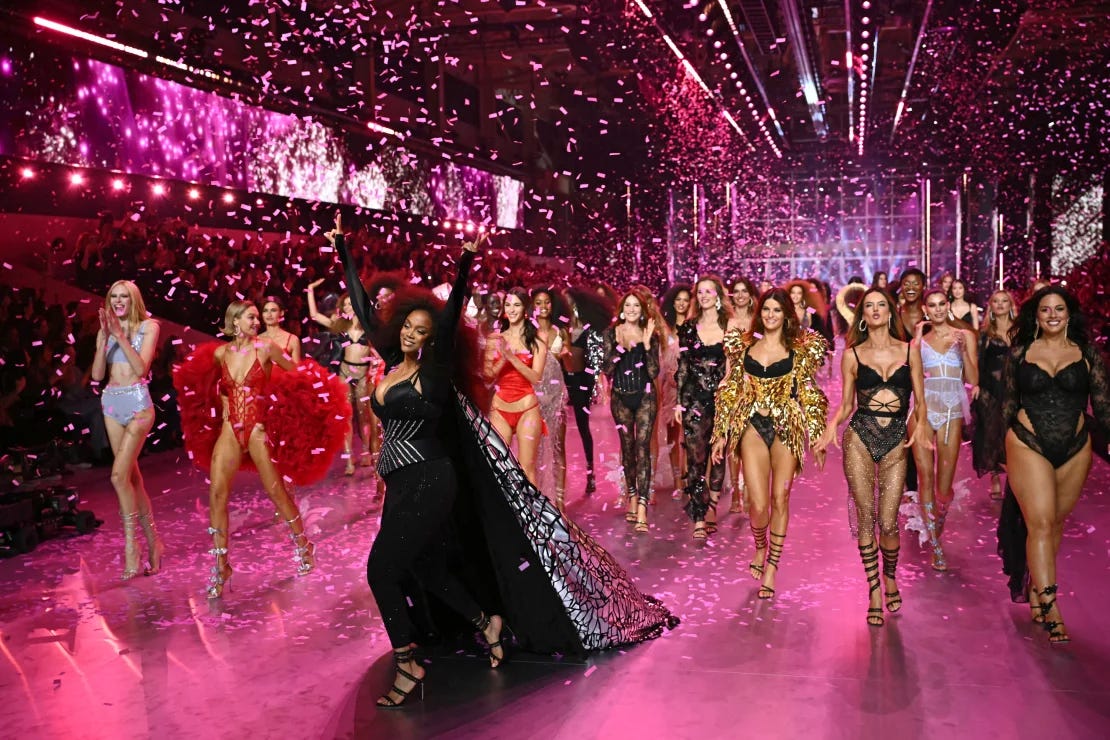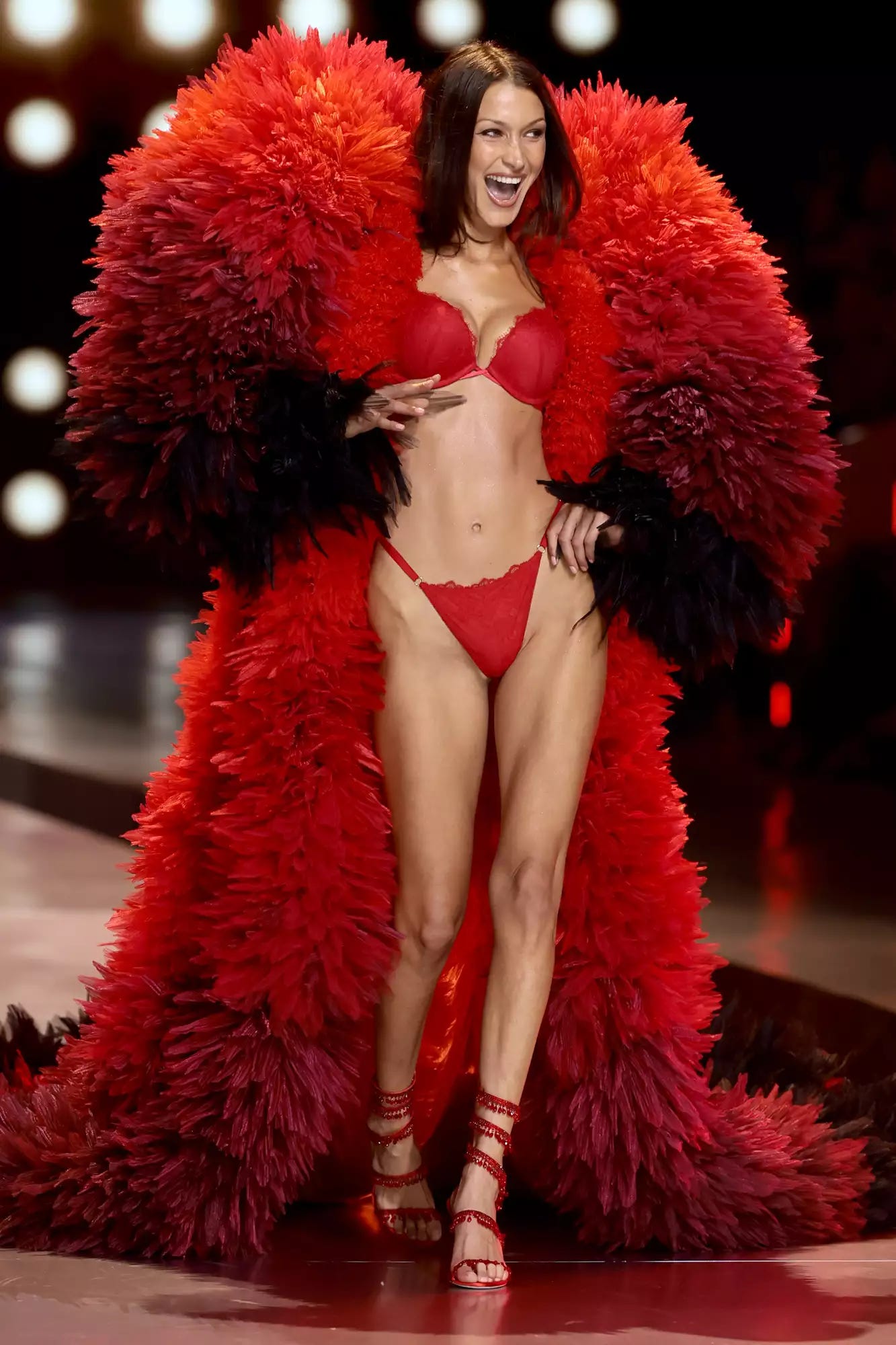Behind the Brand: Victoria’s Secret’s Rise, Fall, and Comeback Attempt
How Victoria’s Secret went from America’s favorite fantasy to a brand struggling to stay relevant in a new era of inclusivity and empowerment.
Victoria’s Secret was the lingerie brand of the ‘90s and early 2000s. When you thought about buying something sexy, whether for yourself or someone else, VS was the first stop. Today, however, Victoria’s Secret has lost the luster and market power it once had, now scrambling to keep up with modern competitors that have embraced inclusivity and body positivity. This week, I want to talk about the powerhouse that was Victoria’s Secret, their downfall, their ongoing rebrand, and how you can avoid the same mistakes in your own business.
The Powerhouse Era
For years, Victoria’s Secret wasn’t just selling lingerie, they were selling a fantasy. In the ‘90s and early 2000s, they were everywhere. Their annual Victoria’s Secret Fashion Show was an event people planned their evenings around, pulling in millions of viewers as their famous “Angels” strutted down the runway in elaborate wings. Victoria’s Secret perfected the art of aspirational marketing: their models were flawless, their stores were luxurious, and they created an atmosphere that made you feel like you were stepping into a world of glamour and exclusivity.
The brand was woven into the cultural fabric. From teenagers shopping for their first bras to adults picking out something special, the experience of walking into a VS store was like a rite of passage. Personally, I remember walking into a store with my mom to pick out my first "grown-up" bra, an experience that has undoubtedly been shared by many across the country. Victoria’s Secret was synonymous with those kinds of firsts, and that emotional connection helped solidify them as a lingerie powerhouse for decades.
The Downfall
While other brands evolved with the times, Victoria’s Secret held tightly to its dated notion of beauty and exclusivity. They continued to champion a narrow and hyper sexualized image of women while brands like Aerie, ThirdLove, and Savage X Fenty embraced body positivity and inclusivity. Victoria’s Secret’s refusal to shift, despite a changing market, set them on a downward spiral.
In 2017, the brand’s Chief Marketing Officer, Ed Razek, made a now infamous statement, saying they didn’t want to include “transsexuals” or plus-size models in their fashion show because the brand was selling a “fantasy.” The backlash was immediate, and rightfully so. With the world moving towards diversity and inclusivity, Razek’s words felt tone deaf, and customers started turning their backs on the brand.
The decline was swift. In 2019, they canceled the Victoria’s Secret Fashion Show after viewership plummeted from nearly 10 million viewers in 2013 to just 3.3 million in 2018. The brand shuttered 50 stores in 2019, followed by another 250 in 2020. At the same time, Rihanna’s Savage X Fenty was gaining major traction for its inclusive approach, featuring models of all shapes, sizes, and genders. It was clear that Victoria’s Secret’s old formula was no longer resonating with modern consumers.
The Rebrand
In an attempt to salvage their image, Victoria’s Secret made some major changes. They scrapped their iconic “Angels” and replaced them with the VS Collective, a diverse and inclusive group of women meant to reshape the brand’s image. The group featured names like soccer star Megan Rapinoe and actor Priyanka Chopra, both advocates for female empowerment and inclusion. This move was intended to distance the brand from its hyper sexualized past and appeal to a broader, more modern audience.
But the execution wasn’t perfect. In 2023, the brand launched the Victoria’s Secret World Tour, an event designed to reclaim their status. However, the result was underwhelming, with critics comparing it to a low budget knockoff of Rihanna’s 2019 Savage X Fenty show. The bold “fantasy” element that once defined the brand was gone, replaced by a watered down version of inclusivity that didn’t feel genuine.
Then, in an effort to regain their lost prestige, Victoria’s Secret announced the return of their Fashion Show, this time with a mix of old and new faces. They promised to reflect “who they are today” while keeping elements that audiences once loved. The show, which aired last night on Amazon Prime, was met with mixed reviews.
My Thoughts on the Comeback:
Inclusivity is Finally Here: Victoria’s Secret finally listened to their audience and brought back the fantasy element of their brand, but this time they included plus size, trans, and POC models. That’s a huge win for the brand, but it’s long overdue.
Mixed Reactions from Viewers: While some fans were thrilled to see the return of familiar faces like Tyra Banks, Gigi Hadid, Adriana Lima, and Candice Swanepoel, others felt the show lacked cohesion. Critics pointed out the absence of a clear theme, the lackluster stage design, and a feeling that the models were rushed. I’ll give them credit though for booking Cher and Kate Moss, those names don’t come cheap.
Is This Enough?: From a branding perspective, I think Victoria’s Secret is finally making strides in the right direction. But they’re not out of the woods yet. The brand needs to find a balance between their iconic fantasy and modern inclusivity if they want to win back old fans and attract the younger generation. Consistency in their messaging and authentic representation are key to their future success.
Branding Lessons for Your Business
Victoria’s Secret’s rise and fall offers important takeaways for small business owners:
Know Your Audience: Don’t get stuck in your ways. Markets evolve, and so do customer expectations. Victoria’s Secret ignored this for too long and paid the price. Stay attuned to your audience’s needs and make sure your brand grows with them. You could do this by regularly sending out feedback surveys or getting client interviews.
Adapt or Die: The failure to embrace inclusivity and comfort left a gaping hole that other brands were quick to fill. Always be aware of market trends and adapt before it’s too late.
Authenticity Matters: Customers are savvy. They can tell when a brand’s shift feels forced or performative. Victoria’s Secret is still struggling to shake the sense that its rebrand is more about damage control than genuine change. Authenticity in your messaging and actions is crucial for building trust.
Authenticity Over Tokenism: If your rebrand or messaging feels inauthentic, customers will see right through it. Victoria’s Secret’s recent changes felt more like a reaction to backlash than a genuine shift in values. Authentic branding is built on transparency and consistent messaging. Don’t just “check a box”, live your values.
What are your thoughts on Victoria’s Secret’s comeback? Do you think they’ll be able to regain their former glory, or is it too little, too late? Share your thoughts in the comments, I’d love to hear how you think brands can successfully rebrand themselves in this era of inclusivity.
P.S. If you’ve got any burning questions or want your brand strategy reviewed, now’s your chance. Submit your questions for Ask Mel or send in your brand materials for Review My Strategy to be reviewed monthly.
See ya next time,
Melissa 🫡






